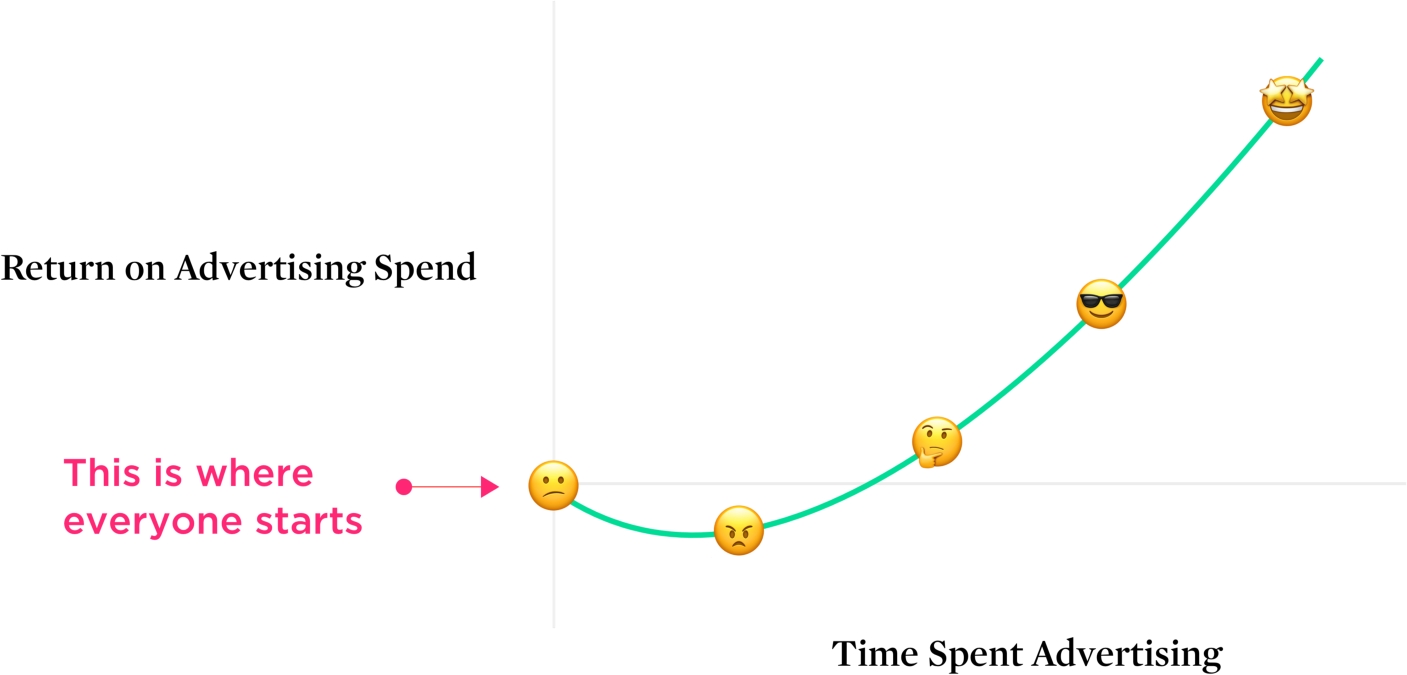Why Advertising Is an Investment
Remember the story of Jack and the Beanstalk? In the fairy tale, a boy trades his family’s source of food and income — a cow — for magic bean seeds. Angered by her son’s foolishness, his mother tosses the seeds out the window. For a moment, joke’s on mom. Overnight those tiny seeds sprout into a giant beanstalk that stretches high into the clouds.
What to expect
Most people expect beanstalk growth from their Facebook ad campaigns. They forget there’s an evil giant lurking in those clouds. Instead, they bank on big magic. Speed. Results. They create a campaign, spend $100, and anticipate $10,000 returns.
Too often, people treat the dollars they put toward Facebook ads as magic bean seeds. It makes sense. That initial investment can be a big deal — as big a deal as giving up the family cow. Such a sacrifice should warrant something equally big in return — right? Tremendous sales = a huge return on ad spend.
It’s important to distinguish fairy tales from reality, and the reality is that most initial forays into Facebook advertising aren’t lucrative. Maybe the campaign results in no sales — or, just as bad, low sales. It’s easy to get frustrated. Who wouldn’t be upset that their time and money is yielding … nothing?
Modest gains or even losses — that’s the first thing to expect from Facebook ad campaigns. Too often, this is where people give up when really they should be practicing patience. As billionaire Warren Buffet says, “No matter how great the talents or efforts, some things just take time.”
Benefits increase over time
Managing expectations is crucial. The benefits of running a Facebook ad campaign grow over time. Those benefits mimic a customer acquisition curve that is bound to be familiar.

If your campaign doesn’t start off with a bang, how do you know you’re on the right track? How do you measure the value of your marketing?
Remember: Your ad campaign is an investment in your brand’s reputation. Any gauge of success must acknowledge this process. It’s a process of spreading awareness, determining a target audience, cultivating a voice, and, of course, honing a product.
Still, as your campaign continues, you’ll want to be armed with a few key measures by which to quantify your progress:
Break-even cost: Total costs = total revenue. You’re not making money, but you’re not losing money either. (Say it costs you $10 to make a T-shirt. If you’re selling that shirt for $10, the total profit is $0.)
Cost of customer acquisition: How much it costs to sell an item to a customer (i.e., if I spend $100 and sell 10 T-shirts, my customer acquisition cost is $10 — $100/10).
Lifetime value (LTV) of customer: How much revenue to expect from a customer over the course of a specific period of time (e.g., one year). If someone averages two purchases from per year, and my product is $20, the LTV of my customer is $40.
Return on Advertising Spend: Total revenue divided by total spend (e.g., if I spend $50 on advertising and make $100, my ROAS is 2x. For every 1$ spent, I make $2).
Finding out what works in Facebook advertising is not impossible. You just have to be perseverant and follow a few best practices that we will layout in-depth later on.
Key Takeaways:
Advertising is an investment in your brand’s reputation with customers.
Manage expectations, practice patience, and analyze your results over time.
Benchmark your advertising performance over time with key measurements.
Last updated
Was this helpful?